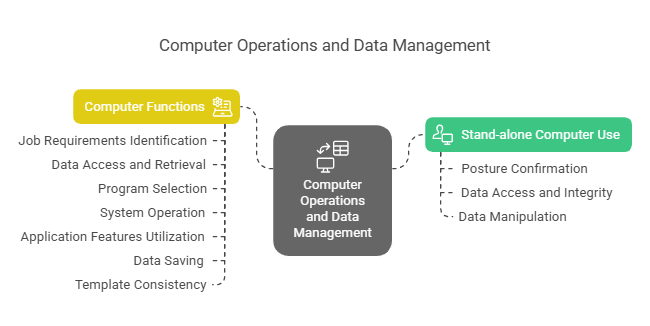Referenced and Amended Data: Mastering Computer Systems in Printing and Graphic Arts
Posted by SkillMaker in Mar, 2025
What is a concise description of referenced and amended data in computer systems within the Printing and Graphic Arts industry?

Referenced and amended data refer to the processes of accessing, using, and modifying data within computer systems for printing and graphic arts. This involves maintaining data integrity and ensuring that all project data—from initial concepts to final output—is accurately aligned with design specifications and revisions.
Listen to this article as a podcast
Why do people in the Printing and Graphics industry need referenced and amended data in computer systems?
In the Printing and Graphics sector, precision and accuracy are critical. Using referenced and amended data ensures consistent quality across all output stages, minimises errors, and facilitates seamless collaboration. By effectively managing data, professionals can maintain client trust and ensure that projects are completed efficiently and to the highest standard.
“Accurate data management is key in printing and graphic arts, ensuring flawless execution and unrivalled quality control.”
What are the key components or elements of referenced and amended data in computer systems for Printing and Graphics?
Key components include:
- Data Referencing: Accurate use of source files and assets.
- Data Amendments: Making required modifications while ensuring current version accuracy.
- File Management Systems: Efficient storage and retrieval of files.
- Version Control: Keeping track of changes made to files over time.
- Data Security: Protecting digital assets from unauthorized access.
What key terms, with descriptions, relate to referenced and amended data in computer systems for Printing and Graphics?

Registered Trademark®
- Metadata: Data that provides information about other data, aiding in its management.
- Digital Asset Management (DAM): Systems that store and organize digital files.
- Workflow Automation: Streamlining tasks and processes through the use of technology.
- Checksum: A value used to verify data integrity.
- Backups: Copies of data retained to prevent loss.
Who is typically engaged with operating or implementing referenced and amended data in computer systems for Printing and Graphics?
Professionals ranging from Graphic Designers, Print Technicians to IT Specialists are engaged in these processes. They work closely to ensure data accuracy and integrity, maintaining the flow of work from the initial design stage to the finalisation of printing or digital outputs.
How does referenced and amended data integrate with other components of the Printing and Graphics industry in Australia?

Integrated data management ensures every component of the industry—from conceptual design to production—operates with unified precision. Effective data management enhances collaboration between design, prepress, and production, optimising both the quality and speed of deliverables.
Where can the student go to find out more information about referenced and amended data in computer systems for Printing and Graphics?
What job roles would be knowledgeable about referenced and amended data in computer systems for Printing and Graphics?
Roles include:
- Graphic Designers
- Print Technicians
- Data Analysts
- IT Support Specialists
- Digital Asset Managers
What is referenced and amended data in computer systems for Printing and Graphics like in relation to sports, family, or schools?

Referenced and amended data systems in Printing and Graphics can be likened to a coach strategising plays based on accurate player statistics. In a family, it’s akin to maintaining a shared calendar where updates are made visible to all. In schools, it parallels rigorous record-keeping and updating student progress reports to ensure everyone is on track.
(The first edition of this post was generated by AI to provide affordable education and insights to a learner-hungry world. The author will edit, endorse, and update it with additional rich learning content.)
(Skillmaker – 2025)

 Post Tagged with
Post Tagged with